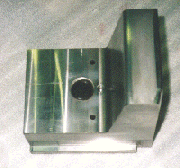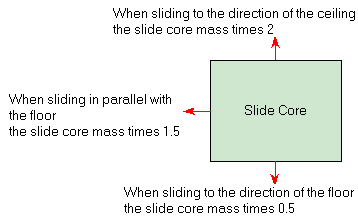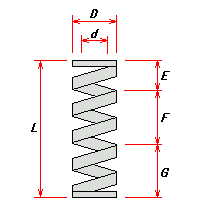 |
 |
 |
|---|---|---|
| Push-pin | Grip of a driver | Grip of a cup |
|
In this chapter you will learn about the
process for an undercut part.
|
Undercut refers to the convex or concave area of part. When removing the part
from the mold, you need some device so that the part of the mold which contacts
to the undercut can be moved to remove the part from the mold since the part
will not be removable directly without the device.
This process is called Undercut process.
Undercut process uses different methods depending upon whether the undercut
is outside or inside the part.
Here are some examples of parts with undercut.
 |
 |
 |
|---|---|---|
| Push-pin | Grip of a driver | Grip of a cup |

|
External Slide Core Method |

|

|

|
Slide Core Body Unit
|
|
(Click each name in the figure to display the description.) |
|

|
Push Back Spring
|


|
D: Spring diameter L: Spring free length (see a catalog by each manufacturer) E: Spring close length (see a catalog by each manufacturer) F: Stroke G: Length of shrinkage by slide weight K: Spring constant (see a catalog by each manufacturer) W: Slide weight |
|
Spring constant (K)
|
Free length (L)
|
Max. deflection (F +
G)
|
Outer diameter (D)
|
Usage count
|
|
0.6kg/mm
|
65mm
|
32.5mm
|
16mm
|
350,000 times
|
As the length of shrinkage due to the weight of the slide mass is: G
= W/K :
G = 7.5/0.6 = 12.5mm
As the free length of the spring is: L = E
+ F + G :
L = 32.5 + 20 + 12.5 = 65. Referring to the catalog,
Use the spring with L = 65.
Answer D = 16 L = 65mm